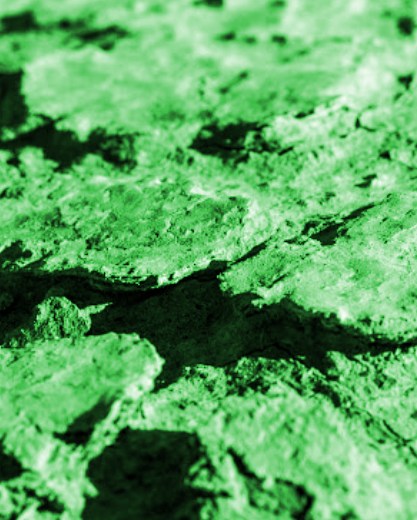Metal transport studied
 New research shows how economically important metals like copper and platinum make their way up from the depths of the Earth.
New research shows how economically important metals like copper and platinum make their way up from the depths of the Earth.
The study sheds new light on how concentrations of metals used in renewable energy technologies can be transported from within the Earth's interior mantle by low temperature, carbon-rich melts.
The findings may assist global efforts to find these valuable raw materials.
Researchers carried out high pressure and high temperature experiments creating small amounts of molten carbonate material at conditions similar to those around 90 kilometres deep in the mantle, below the Earth’s crust.
Their experiments showed carbonate melts can dissolve and carry a range of critical metals and compounds from surrounding rocks in the mantle - new information to inform future metal prospecting.
“We knew that carbonate melts carried rare earth elements, but this research goes further,” says Dr Isra Ezad, a postdoctoral research fellow from Macquarie University’s School of Natural Sciences.
“We show this molten rock containing carbon takes up sulphur in its oxidised form, while also dissolving precious and base metals - ‘green’ metals of the future - extracted from the mantle.”
Most of the rock that lies deep in the Earth’s crust and below in the mantle is silicate in composition, like the lava that comes out of volcanoes.
However a tiny proportion (a fraction of a per cent) of these deep rocks contain small amounts of carbon and water that causes them to melt at lower temperatures than other portions of the mantle.
These carbonate melts effectively dissolve and transport base metals (including nickel, copper and cobalt), precious metals (including gold and silver), and oxidised sulfur, distilling these metals into potential deposits.
“Our findings suggest carbonate melts enriched in sulphur may be more widespread than previously thought, and can play an important role in concentrating metal deposits," says Dr Ezad.
The researchers used two natural mantle compositions: a mica pyroxenite from western Uganda and a fertile spinel lherzolite from Cameroon.
Thicker continental crust regions tend to form in older inland regions of continents, where they can act as a sponge, sucking up carbon and water, Dr Ezad says.
“Carbon-sulphur melts appear to dissolve and concentrate these metals within discrete mantle regions, moving them into shallower crustal depths, where dynamic chemical processes can lead to ore deposit formation," Dr Ezad says.
Dr Ezad says that this study indicates that tracking carbonate melts could provide a better understanding of large-scale metal redistribution and ore formation processes over Earth's history.
“As the world transitions away from fossil fuels to battery, wind and solar technology, demand for these essential metals is skyrocketing, and it’s becoming harder to find reliable sources,” says Dr Ezad.
“This new data provides us with a mineral exploration space previously not considered for base and precious metals – deposits from carbonate melts,” she says.








 Print
Print